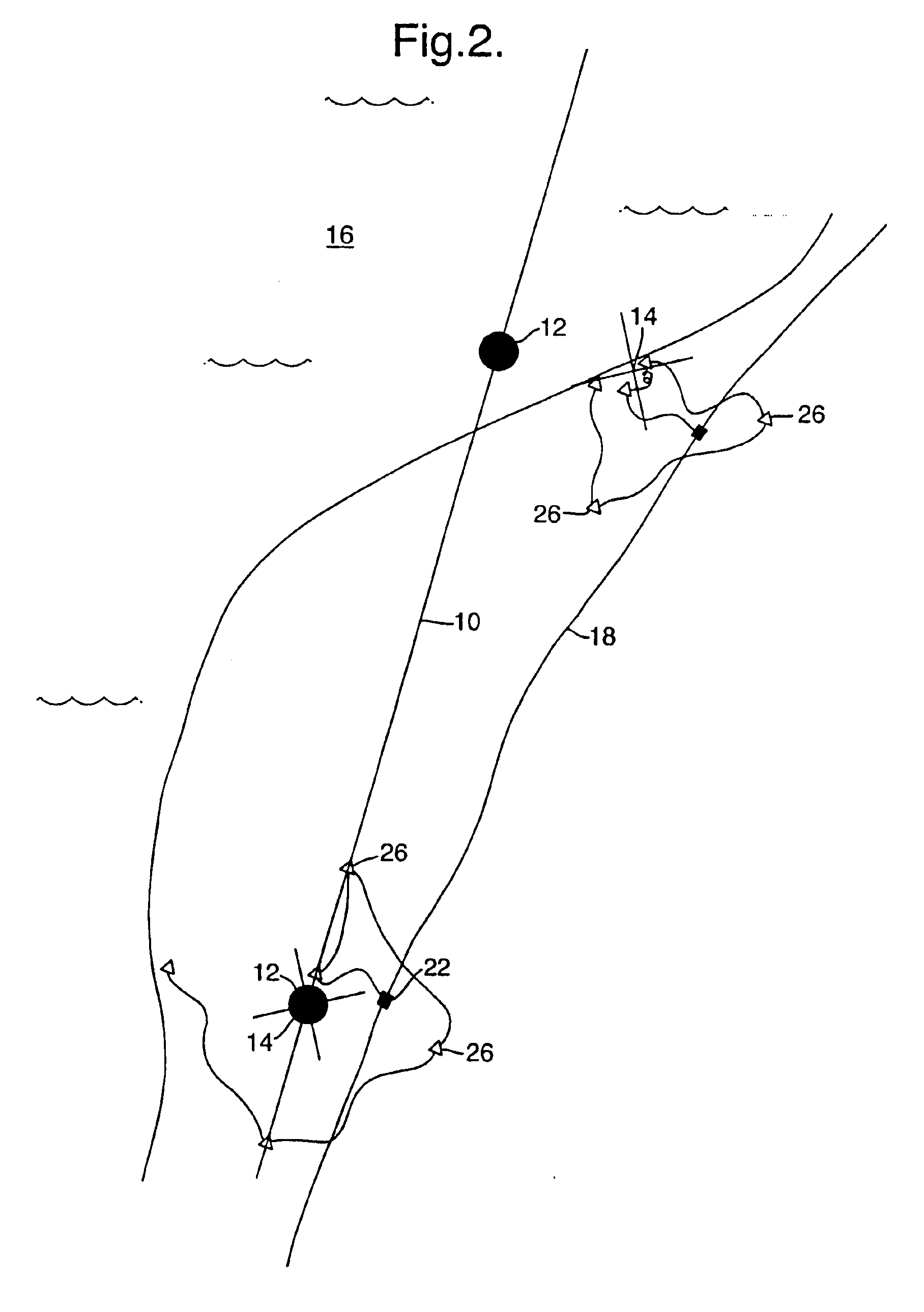Seismic data acquisition method and apparatus
a seismic data and acquisition method technology, applied in direction finders, direction finders using ultrasonic/sonic/infrasonic waves, instruments, etc., can solve problems such as inability to bypass obstacles, acquisition channels may not be used to allow bypassing obstacles, and the coordinate values attributed to seismic data may be improperly moved
- Summary
- Abstract
- Description
- Claims
- Application Information
AI Technical Summary
Benefits of technology
Problems solved by technology
Method used
Image
Examples
Embodiment Construction
FIG. 1 shows a schematic view of a portion of a 3D seismic survey sensor lay-out scheme in a land environment. A plurality of parallel lines 10 are laid down over a particular geographic area and a number of pre-planned seismic survey station locations 12 are positioned at regular intervals along their lengths. It should be understood that only a portion of the entire 3D seismic survey sensor lay-out scheme is shown in FIG. 1. As discussed above, each line in a typical 3D seismic survey may be five kilometers in length and may including 100 stations. There may be between five to twenty active lines in a typical 3D seismic survey and the spacing between the lines may be on the order of 300 to 1000 meters or so.
In the first phase of the seismic data acquisition process, a layout plan is created that determines where the lines 10 should be placed on the surface of the earth to obtain an “optimal” (in some geophysical sense) seismic image of the subsurface area of interest. In this firs...
PUM
 Login to View More
Login to View More Abstract
Description
Claims
Application Information
 Login to View More
Login to View More - R&D
- Intellectual Property
- Life Sciences
- Materials
- Tech Scout
- Unparalleled Data Quality
- Higher Quality Content
- 60% Fewer Hallucinations
Browse by: Latest US Patents, China's latest patents, Technical Efficacy Thesaurus, Application Domain, Technology Topic, Popular Technical Reports.
© 2025 PatSnap. All rights reserved.Legal|Privacy policy|Modern Slavery Act Transparency Statement|Sitemap|About US| Contact US: help@patsnap.com



